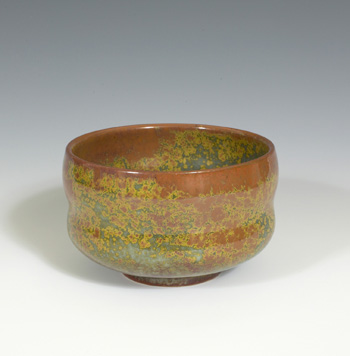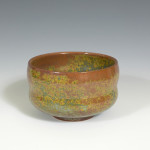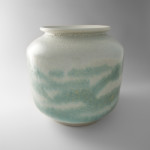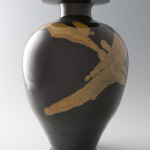By STEPHEN V. KOBASA
There was a box near his kiln full of all the pots he had shattered, like a collection of shards for Job to scratch his festering skin with. I was neither outraged nor saddened by this, but puzzled. What did he see that I did not?
It was that question that returned to me when I learned only a few weeks ago of Brother Thomas Bezanson's death last August. It had been over forty years since I first stepped into his pottery, then at the Benedictine Priory in Weston, Vermont.
With that news came the sense of obligation for a eulogy, but one that refused competition with his own words. Thomas wrote even in disobedience of his private conviction that the work should be left to its unaccompanied voice. And he wrote well, free of the babble which most artists find themselves driven to when up against the mysteries of their own making.
But what way did I have to account for my own history with his work, and its paradox of glazed surfaces which denied the physics that should have limited them? And what difference should it make in the wartime of the present that such things as he fashioned exist at all?
If Brother Thomas had a sense of original sin, it was that perfection is out of our finite reach. Flaws were not necessary - they were unavoidable. Still, there was something in him that required that the imperfection be perfect, that it could be read in the morality of the piece.
For his works were not escapist, but defiant. They were hope's evidence in a world whose weight was angry against them. These mortal ceramics, breakable, were still somehow artifacts of Eden - a reminder of what once was, and yet could be again.
There is a temptation to reference scripture when desperate for some adequate evocation of what Thomas made, but the cliche of "treasures in earthen vessels" is neither self evident nor responsible as a judgment.
The clay in Jesus' hands that heals blindness comes closer. Thomas's eyes were open, especially to who he was as artist and believer. Humility is not self-abnegation but certainty as to where the self begins and ends. And to be in the presence of one of his pots is to see with a clarity that approaches pain, that very experience of one blind from birth who suddenly has sight.
And then there is that potter's field bought as a cemetery for strangers with the coins that Judas threw away, a place where the artists dug their clay. All our graves are anonymous in the end; even when carved names survive, there is no one to recognize them. But, shaped dust that we are, pottery is an exercise in creating our own image, a shadow of God.
All Thomas' pieces were memorials, evoking those masters of China and Japan who had sent the measure of clay out of the past. He took those lessons seriously, but he had no belief in apprentices. The learning was meant to be a lonely journey
There was a time when I decided that my possessions had become unbearable, too much of what mattered to me in them. My thought was that by reducing their number, I would free myself. But what resulted was merely a compounding of value - the fewer things held all the burden of the many. One of the last was a piece by Brother Thomas that had come into my possession as an inheritance. I became afraid around it. It was to me merely precious, my anticipation of its breaking the only relationship I had with it. So I gave it away, an occasion of sin become grace, as I thought. But I had not learned the lesson of fragility that all Thomas's work taught - that only the lost were saved.
It is incredible to me still that these things he made were once simply clay.
And that he was.
- Brother Thomas Bezanson, Tea Bowl, (“Koke” Glaze)
- Brother Thomas Bezanson, Large Jar (Turquoise Kairagi Glaze)
- Brother Thomas Bezanson, Tall Vase (Tenmoku with Crystalline Rutile Glaze)
Brother Thomas Bezanson was born in Halifax, Nova Scotia in 1929. He was a Benedictine monk at Weston Priory in Vermont for twenty-five years and has worked as an artist-in-residence with the Benedictine Sisters of Erie since 1985. Brother Thomas died August 16, 2007.
Images and biography are courtesy of the Pucker Gallery.







